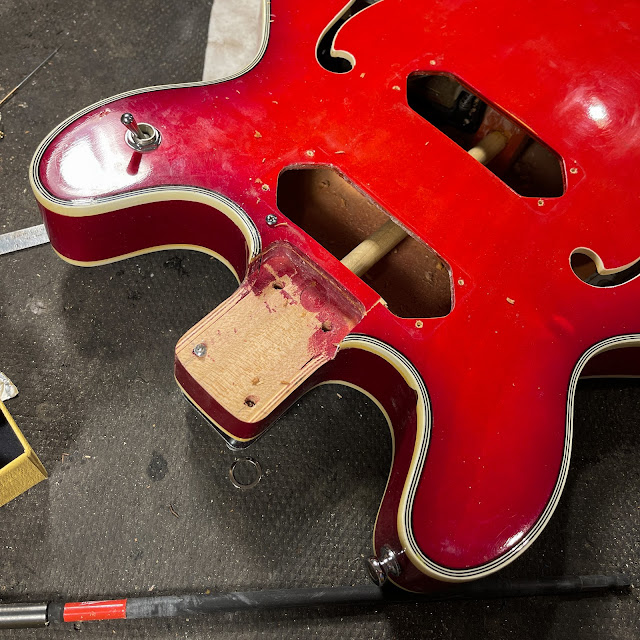Workshop: Bolt-On Hollowbody Support Rod
If you've owned any '60s or '70s bolt-on neck, hollowbody electric guitars (or basses), you know how finicky they can be as far as setup and solidity. Sometimes you shim a joint to get the neck angle back and in a few hours the action is sky-high again and it needs an extra shim. Sound familiar?
The reason is that the neckblock on most of these instruments (US-made or otherwise, though the Coronado series by Fender is solid) is usually not tough enough for the job is underbuilt and often loose from the sides even if it doesn't look loose. In the case of this guitar the joint fatigue is obvious (one horn has an attempt at regluing the drifting joint) but it was never dealt with.
This, however, is how I deal with the problem. Note in the above photo that there's a 1/2" dowel running through the center of the body. That's actually buried into the neckblock a little bit.
The end result is a guitar that's stable, does not move in service, and is gig-ready. The guitar in question here is a '70s Epiphone EA-250 that now sounds/plays killer and... guess what? Hasn't moved or needed tuning since stringing last week. Yip!
I'm actually thinking of installing hidden dowels as a matter of course on all of this type of old guitar going forward... it would make life easier for the owners, that's for sure.






Comments
Do you have pics of the dowel as it enters the neck block? The Lyle neck block is nearly non-existent; I'm wondering if this guitar had more meat to drill into/glue into.